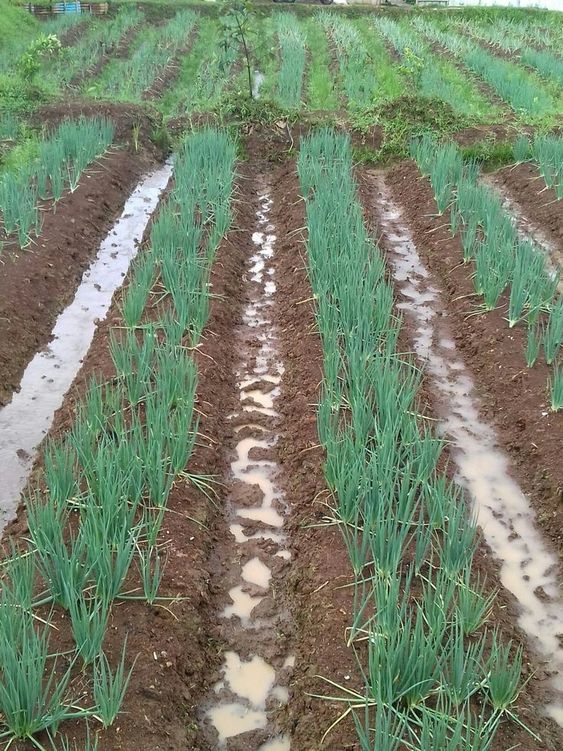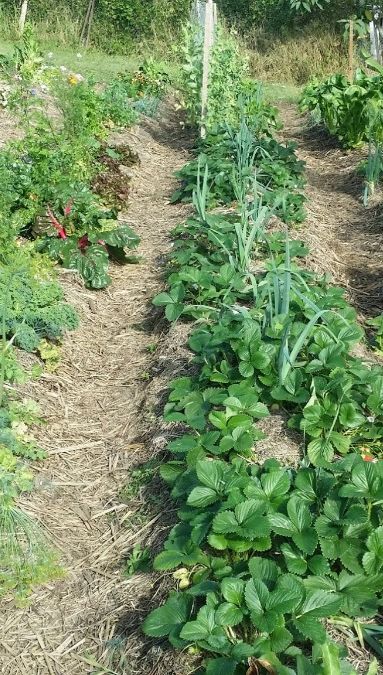Aeroponic Onion Farming: Revolutionizing Crop Production with Smart Agriculture
Aeroponic Onion Farming,In the quest for sustainable and efficient agriculture, aeroponics has emerged as a revolutionary technique, particularly for high-value crops such as onions. By merging aeroponics with Smart Agriculture practices, we can achieve a transformative approach to farming that addresses numerous challenges inherent in traditional onion cultivation.
Aeroponics is a soilless growing technique where plants are suspended in air and their roots are misted with a nutrient-rich solution. This method contrasts with traditional soil-based farming, where plants rely on soil for nutrients and support. Aeroponic systems typically utilize a network of pumps, nozzles, and sensors to deliver a fine mist of nutrients and oxygen directly to the plant roots, ensuring optimal growth conditions.
Contents
- 1 Key Components of Aeroponic Systems
- 2 The Role of Smart Agriculture in Aeroponic Onion Farming
- 3 Benefits of Aeroponic Onion Farming
- 4 Objectives of Aeroponic Onion Farming
- 5 Usefulness of Aeroponic Onion Farming
- 6 Advantages of Aeroponic Onion Farming
- 7 Challenges and Solutions in Aeroponic Onion Farming
- 8 Future Outlook and Trends
Key Components of Aeroponic Systems
- Growing Chamber: A sealed environment where plants are suspended, allowing for optimal exposure to mist and light. The chamber is designed to minimize contamination and provide a controlled environment for plant growth.
- Nutrient Delivery System: Includes pumps, nozzles, and tubing that deliver a fine mist of nutrients to the plant roots. This system ensures that plants receive a consistent and precise supply of essential nutrients.
- Support Structures: Frames or nets that hold the plants in place, ensuring stability and proper root development. These structures are designed to accommodate the vertical growth of plants.
- Environmental Control Systems: Regulate temperature, humidity, and light to create ideal growing conditions. Advanced systems can be programmed to adjust these parameters automatically based on real-time data.
The Role of Smart Agriculture in Aeroponic Onion Farming
Smart Agriculture integrates advanced technologies to enhance farming practices. In aeroponic onion farming, Smart Agriculture involves the use of various tools and technologies to optimize efficiency and productivity:
- Sensors and Monitoring: Sensors track nutrient levels, pH, temperature, and humidity, providing real-time data for adjustments. This data helps in maintaining optimal growing conditions and preventing potential issues.
- Data Analytics: Analyzing data from sensors allows for the optimization of nutrient delivery and environmental settings. Predictive analytics can help in anticipating plant needs and improving overall management.
- Automated Systems: Automation in nutrient delivery, environmental control, and data collection reduces manual labor and increases precision. Automated systems can adjust conditions based on real-time feedback from sensors.
- Remote Monitoring: Farmers can monitor and manage their aeroponic systems remotely using IoT (Internet of Things) technologies. This capability allows for convenient and efficient management of the farming operations.

Benefits of Aeroponic Onion Farming
1. Faster Growth Rates
Aeroponic systems provide plants with an optimal mix of nutrients and oxygen, resulting in faster growth compared to traditional soil farming. Onions grown in aeroponic systems can mature more quickly, allowing for more frequent harvests and maximizing productivity.
2. Increased Yield
Aeroponic Onion Farming,The controlled environment of aeroponics can lead to higher yields. Without the limitations of soil, onions can grow larger and more uniformly, enhancing overall productivity and profitability.
3. Reduced Water Usage
Aeroponic systems use significantly less water compared to conventional farming. The misting process recycles water, minimizing waste and making it a more sustainable option, especially in water-scarce regions.
4. Minimal Soil-Borne Diseases
Since aeroponics eliminates soil, the risk of soil-borne diseases and pests is substantially reduced. This contributes to healthier plants, decreases the need for chemical pesticides, and enhances overall crop quality.
5. Space Efficiency
Aeroponic systems can be designed vertically, allowing for more efficient use of space. This makes them suitable for urban farming and locations with limited land availability, promoting local food production.
6. Enhanced Nutrient Absorption
The misting method used in aeroponics allows for better nutrient absorption by the plant roots. This ensures that plants receive a balanced and readily available supply of nutrients, leading to improved growth and development.
7. Precision Control
Aeroponic systems provide precise control over environmental conditions and nutrient delivery. This level of precision helps in optimizing plant growth and achieving consistent results.
8. Reduced Labor Costs
The automation and efficiency of aeroponic systems can lead to reduced labor costs. Automated systems handle routine tasks such as nutrient delivery and environmental adjustments, freeing up labor for other critical tasks.
Objectives of Aeroponic Onion Farming
1. Maximizing Resource Efficiency
A primary objective of aeroponic onion farming is to optimize the use of resources such as water, nutrients, and space. Aeroponics achieves this by providing precise amounts of nutrients and minimizing water waste, leading to more sustainable farming practices.
2. Enhancing Productivity
Aeroponic farming aims to increase onion yields and improve the quality of produce. By creating ideal growing conditions, it supports higher productivity, allowing farmers to meet market demands more effectively.
3. Reducing Environmental Impact
Aeroponics reduces the reliance on soil and minimizes water usage, contributing to a lower environmental footprint. It also reduces the need for chemical inputs, aligning with the goals of sustainable and eco-friendly farming practices.
4. Advancing Agricultural Technology
Integrating Smart Agriculture technologies with aeroponics contributes to the advancement of agricultural practices. This includes the development of more sophisticated sensors, automation systems, and data analytics tools that enhance overall farming efficiency.
5. Improving Crop Quality
Aeroponic systems focus on optimizing growing conditions to enhance the quality of onion crops. This includes factors such as size, flavor, and nutritional content, which are crucial for meeting consumer preferences and market standards.
6. Supporting Urban Agriculture
Aeroponic onion farming supports urban agriculture by utilizing vertical space and reducing the need for large land areas. This approach aligns with the growing trend of urban farming and contributes to local food security.
6. Explanation of Aeroponic Onion Farming
Aeroponic onion farming operates on the principle that plants can thrive without soil by being suspended in air and receiving nutrients through misting. The nutrient solution is delivered directly to the roots, providing all necessary elements for growth. The system is designed to maintain optimal conditions, including temperature, humidity, and nutrient concentration, ensuring that onions grow efficiently and healthily.
In practice, aeroponic systems offer a highly controlled environment where factors like light and temperature can be adjusted to suit the specific needs of onion plants. This precision allows for enhanced growth and reduced risks of disease and pest infestations, leading to higher quality and more consistent yields.
Usefulness of Aeroponic Onion Farming
1. Precision Farming
Aeroponic Onion Farming, combined with Smart Agriculture technologies, enables precision farming by allowing exact control over nutrient delivery and environmental conditions. This precision ensures optimal growth and consistency in crop production.
2. Urban Farming
Aeroponic Onion Farming systems are well-suited for urban settings where space is limited. They can be integrated into buildings and rooftops, allowing for local production of onions and reducing the need for long-distance transportation.
3. Sustainability
The reduced use of water and chemicals, along with minimal environmental impact, makes aeroponic farming a sustainable choice. It aligns with the goals of modern agriculture to minimize resource use and environmental damage.
4. Innovation in Agriculture
Aeroponic onion farming represents a significant innovation in agriculture. It demonstrates how technology can transform traditional farming practices and address challenges such as limited resources, environmental impact, and the need for increased productivity.
5. Educational Opportunities
Aeroponic systems offer educational opportunities for students and aspiring farmers. Learning about this advanced technology and its applications can inspire new approaches to agriculture and promote interest in sustainable farming practices.
6. Market Differentiation
Onions produced through aeroponic systems can be marketed as premium products due to their superior quality and sustainability. This differentiation can attract consumers looking for high-quality and environmentally-friendly produce.
Advantages of Aeroponic Onion Farming
1. Improved Plant Health
Aeroponics promotes healthier plants by providing a clean and controlled environment. The absence of soil reduces the risk of disease and pests, leading to stronger and more resilient onions.
2. Cost Efficiency
While the initial setup cost for aeroponic systems can be high, the long-term benefits include reduced water and nutrient costs. The increased yield and faster growth rates can offset the initial investment, making it a cost-effective solution over time.
3. Enhanced Quality
Onions grown in aeroponic systems often have superior quality in terms of size, taste, and nutritional content. The precise control over growing conditions contributes to the overall quality of the produce, meeting consumer expectations.
4. Flexibility and Scalability
Aeroponic Onion Farming systems can be scaled up or down depending on the requirements. This flexibility makes them suitable for both small-scale urban farms and large commercial operations, accommodating various production needs.
5. Reduced Environmental Footprint
Aeroponics reduces the need for soil and minimizes water usage, contributing to a lower environmental footprint. The reduced reliance on chemicals and the efficient use of resources align with sustainable farming goals.
6. Innovation and Research
Aeroponic systems offer opportunities for research and innovation in agriculture. Advances in aeroponics and Smart Agriculture technologies can lead to new discoveries and improvements in farming practices.
7. Increased Market Competitiveness
By adopting aeroponic farming techniques, producers can gain a competitive edge in the market. The ability to offer high-quality, sustainably-grown onions can attract discerning consumers and establish a strong market presence.

Challenges and Solutions in Aeroponic Onion Farming
1. Initial Setup Costs
Challenge: The initial investment for aeroponic systems can be high, including costs for equipment, infrastructure, and technology.
Solution: While the upfront costs can be significant, the long-term benefits such as increased yields, reduced resource usage, and lower operational costs can offset the initial investment. Exploring financing options, government grants, and subsidies can also help mitigate these costs.
2. Technical Complexity
Challenge: Aeroponic systems involve complex technology and require specialized knowledge to operate and maintain.
Solution: Investing in training and education for operators can help address this challenge. Additionally, partnering with technology providers and experts can provide ongoing support and technical assistance.
3. System Maintenance
Challenge: Regular maintenance and monitoring are essential to ensure the proper functioning of aeroponic systems.
Solution: Implementing automated monitoring and maintenance systems can reduce the need for manual checks. Scheduled maintenance and preventive measures can also help in minimizing downtime and ensuring system reliability.
4. Nutrient Management
Challenge: Managing the nutrient solution and ensuring its proper balance can be challenging.
Solution: Advanced sensors and data analytics can help in monitoring nutrient levels and making precise adjustments. Regular testing and calibration of nutrient solutions are also essential for maintaining optimal conditions.
5. Market Acceptance
Challenge: Educating consumers and gaining market acceptance for aeroponically grown onions can be challenging.
Solution: Raising awareness about the benefits of aeroponic farming through marketing and educational campaigns can help in promoting market acceptance. Highlighting the superior quality and sustainability aspects of aeroponically grown onions can attract consumers.
6. Technological Advances
Challenge: Rapid technological changes can make it difficult to keep up with the latest advancements in aeroponic systems.
Solution: Staying informed about industry trends and advancements through research and networking can help in adapting to new technologies. Collaborating with technology providers and participating in industry conferences can also provide insights into emerging technologies.
Future Outlook and Trends
1. Integration with Artificial Intelligence
The integration of artificial intelligence (AI) with aeroponic systems is expected to enhance predictive analytics and decision-making. AI algorithms can optimize nutrient delivery, environmental controls, and yield predictions, further improving the efficiency and productivity of aeroponic onion farming.
2. Expansion of Urban Agriculture
As urban agriculture continues to grow, aeroponic systems will play a significant role in supporting local food production. Vertical farming and urban aeroponic systems will become more common, contributing to food security and sustainability in urban areas.
3. Advances in Nutrient Solutions
Research into advanced nutrient solutions will likely lead to improvements in plant growth and development. Customized nutrient formulations and smart delivery systems will enhance the efficiency of aeroponic systems and support better crop quality.
4. Increased Collaboration
Collaboration between technology providers, researchers, and farmers will drive innovation in aeroponic farming. Partnerships and knowledge-sharing initiatives will facilitate the development of new technologies and best practices, benefiting the agricultural sector as a whole.
5. Sustainability Focus
Aeroponic Onion FarmingThe emphasis on sustainability will continue to drive the adoption of aeroponic systems. As environmental concerns grow, aeroponic farming’s resource-efficient and eco-friendly characteristics will align with the goals of modern agriculture, promoting a more sustainable future.
6. Enhanced Consumer Awareness
Aeroponic Onion Farming,Increased consumer awareness of the benefits of aeroponically grown produce will lead to greater market acceptance. Education and outreach efforts will help consumers understand the advantages of aeroponic farming and its impact on quality and sustainability.
Aeroponic onion farming, supported by Smart Agriculture technologies, represents a significant advancement in agricultural practices. By combining the efficiency of aeroponics with the precision of modern technology, farmers can achieve faster growth rates, higher yields, and improved quality of onions. The benefits of reduced water usage, minimal soil-borne diseases, and space efficiency make aeroponics a viable option for sustainable and innovative farming. As technology continues to evolve, aeroponic systems will play an increasingly important role in the future of agriculture, contributing to a more efficient and sustainable food production system.




